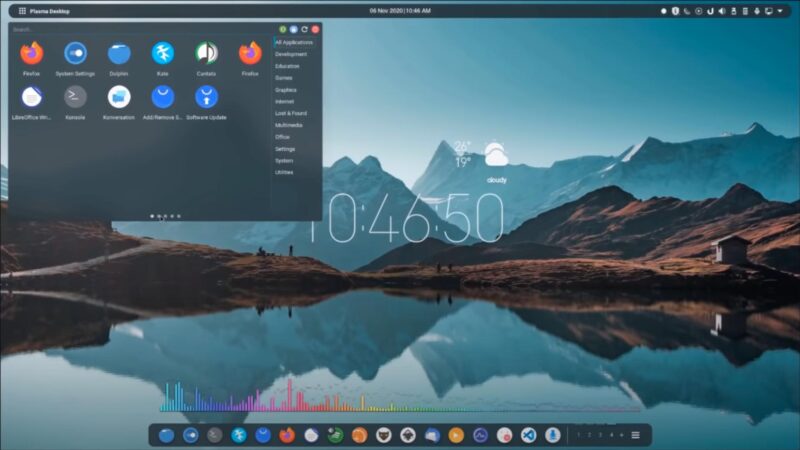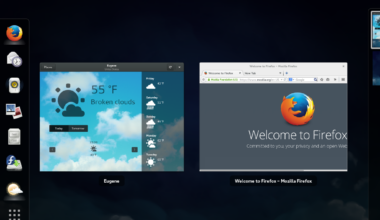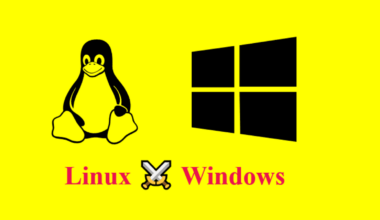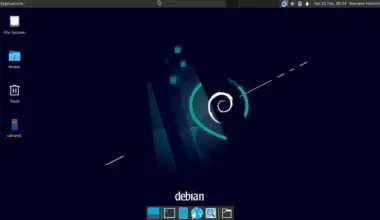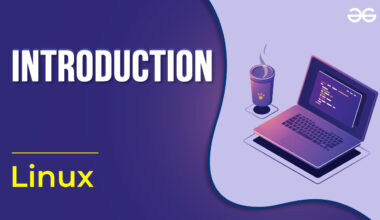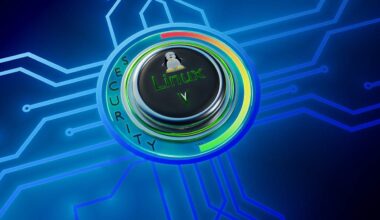Introduction to the Linux Desktop
As a virtual assistant, I’ve seen the Linux desktop grow in popularity in recent years. Linux is a free and open-source operating system that has been around for decades, but it’s only recently that it’s become a viable option for everyday users. The Linux desktop is a user-friendly version of Linux that is designed to look and feel like popular operating systems such as Windows and macOS.
One of the key advantages of the Linux desktop is that it’s free to use and distribute. This means that you don’t have to pay for a license to use the operating system, and you can share it with others without any legal issues. In addition, Linux is known for its stability and security. Since it’s open-source, there are many developers working on improving the code and fixing any security vulnerabilities that are found.
Another advantage of the Linux desktop is that it’s highly customizable. You can choose from a variety of desktop environments, such as GNOME, KDE, and Xfce, each with its own unique look and feel. You can also customize the icons, fonts, and themes to suit your preferences. Additionally, Linux has a vast library of software available through package managers like apt and yum, so you can easily find and install the programs you need.
The Linux desktop has been gaining popularity in recent years, especially among developers and tech-savvy users. This is due in part to the rise of open-source software and the increasing awareness of privacy concerns. Many people are looking for alternatives to proprietary software and operating systems that may collect and share their data without their knowledge.
The Linux desktop is suitable for both personal and business use. It’s a great option for home users who want a free and secure operating system that’s easy to use and customize. For businesses, Linux can provide a cost-effective solution that’s highly customizable and secure. Many companies have already switched to Linux for their servers and are now considering it for their desktops as well.
Overall, the Linux desktop is a powerful and customizable operating system that’s gaining popularity among users and businesses alike. In the next section, we’ll explore some of the advantages of using the Linux desktop in more detail.
Advantages of Using Linux Desktop
There are several advantages of using the Linux desktop that make it a popular choice among users and businesses. Let’s take a closer look at some of these advantages:
1. Cost-Effective
One of the most significant advantages of using the Linux desktop is that it’s free to use and distribute. This means that you don’t have to pay for a license to use the operating system, and you can share it with others without any legal issues. In contrast, proprietary operating systems like Windows and macOS can be expensive, especially if you need multiple licenses for your business.
2. Highly Customizable
Linux desktop is highly customizable, which means that you can tailor it to suit your preferences. You can choose from a variety of desktop environments, each with its own unique look and feel. You can also customize the icons, fonts, and themes to suit your preferences. Additionally, Linux has a vast library of software available through package managers like apt and yum, so you can easily find and install the programs you need.
3. Secure and Stable
Linux is known for its stability and security. Since it’s open-source, there are many developers working on improving the code and fixing any security vulnerabilities that are found. Linux desktop is also less vulnerable to malware and viruses than other operating systems, which is a significant advantage for businesses that handle sensitive data.
4. Compatibility
The Linux desktop is compatible with a wide range of hardware, which makes it a versatile choice for businesses. It can run on older hardware, which means that you don’t have to invest in new hardware to use the latest version of the operating system.
5. Community Support
Linux has a large and active community of developers and users who offer support and advice to new users. You can find answers to your questions on forums, social media, and other online communities. This community support is especially helpful for businesses that are new to Linux and need assistance with installation, configuration, and troubleshooting.
In conclusion, the Linux desktop offers several advantages over proprietary operating systems like Windows and macOS. It’s highly customizable, secure, stable, cost-effective, and compatible with a wide range of hardware. If you’re looking for an operating system that offers these benefits, the Linux desktop is definitely worth considering.
Increasing Popularity of Linux Desktop
In recent years, the Linux desktop has been gaining popularity among users and businesses. Here are some of the reasons why:
1. Open-Source Nature
Linux is an open-source operating system, which means that the source code is freely available to anyone who wants to use it. This open-source nature has led to a vast community of developers who work to improve the code and develop new features. As a result, Linux is constantly evolving, and users can benefit from regular updates and improvements.
2. Privacy Concerns
In today’s world, privacy concerns are becoming increasingly important. Many users are now looking for alternatives to proprietary operating systems that may collect and share their data without their knowledge. Linux is known for its privacy and security features, which makes it a popular choice among users who value their online privacy.
3. Cost-Effective
As mentioned earlier, the Linux desktop is free to use and distribute. This is a significant advantage for businesses that are looking to reduce their operating costs. With Linux, businesses can save on licensing fees, hardware costs, and software costs, which can add up to significant savings over time.
4. Increasing Compatibility
Linux is becoming increasingly compatible with a wide range of software and hardware. This compatibility has helped to increase its popularity among businesses and users who need to use specific software or hardware. Many software vendors are now offering Linux versions of their products, which means that users can access the software they need without having to switch to a different operating system.
5. Gaming
Gaming on Linux has come a long way in recent years. Many popular games now offer Linux versions, and there are also several gaming platforms that are compatible with Linux, such as Steam. This has helped to increase the popularity of Linux among gamers who are looking for a stable and customizable gaming platform.
6. User-Friendly Interfaces
One of the main reasons why the Linux desktop is becoming more popular is because of its user-friendly interfaces. Many Linux distributions now offer desktop environments that are designed to look and feel like popular operating systems such as Windows and macOS. This makes it easier for users to switch to Linux without having to learn a new interface.
In conclusion, the Linux desktop is becoming more popular among users and businesses due to its open-source nature, privacy and security features, cost-effectiveness, increasing compatibility, gaming capabilities, and user-friendly interfaces. As more users and businesses switch to Linux, it’s likely that its popularity will continue to grow in the future.
Linux Desktop for Business and Personal Use
The Linux desktop is a versatile operating system that can be used for both personal and business purposes. Here are some of the reasons why the Linux desktop is a great option for both types of users:
1. Cost-Effective
One of the most significant advantages of using the Linux desktop for business and personal use is that it’s cost-effective. The Linux desktop is free to use and distribute, which means that you don’t have to pay for a license to use the operating system. This can save both businesses and individuals a significant amount of money over time. Additionally, many Linux applications are open-source and free to use, which can further reduce costs.
2. Customization
The Linux desktop is highly customizable, which means that you can tailor it to suit your preferences. This can be especially useful for businesses that need to create a specific workflow or individuals who want to personalize their desktop. You can choose from a variety of desktop environments, such as GNOME or KDE, and customize the icons, fonts, and themes to suit your preferences.
3. Security
The Linux desktop is known for its security features, which can be especially important for businesses that handle sensitive data. Linux is less vulnerable to malware and viruses than other operating systems, which means that your data is less likely to be compromised. Additionally, since Linux is open-source, there are many developers working on improving the code and fixing any security vulnerabilities that are found.
4. Compatibility
The Linux desktop is compatible with a wide range of hardware, which makes it a versatile choice for businesses and personal use. It can run on older hardware, which means that you don’t have to invest in new hardware to use the latest version of the operating system. Additionally, many software vendors are now offering Linux versions of their products, which means that you can access the software you need on the Linux desktop.
5. Productivity
The Linux desktop offers a variety of productivity tools that can be useful for both businesses and personal use. For example, the LibreOffice suite is a free and open-source alternative to Microsoft Office that includes a word processor, spreadsheet program, and presentation software. Many other productivity tools are also available through Linux package managers, such as GIMP for image editing and Inkscape for vector graphics.
6. Community Support
The Linux community is large and active, which means that you can find support and assistance easily. Whether you’re a business looking for help with installation and configuration or an individual looking for
User-Friendly Linux Desktop Interfaces
One of the common misconceptions about Linux is that it’s difficult to use and requires a lot of technical knowledge. However, this is no longer the case, especially with the Linux desktop. Many Linux distributions now offer user-friendly interfaces that are designed to look and feel like popular operating systems such as Windows and macOS. Here are some of the ways that the Linux desktop interfaces are user-friendly:
1. Desktop Environments
Linux desktop offers a variety of desktop environments, each with its own unique look and feel. Some of the popular desktop environments include GNOME, KDE, and Xfce. These desktop environments come with pre-installed applications and offer advanced customization options, making it easier for users to personalize their desktops.
2. Application Launchers
The Linux desktop offers a variety of application launchers that make it easier for users to find and launch their favorite applications. The launchers can be accessed from the desktop or the taskbar and provide a quick and easy way to launch applications without having to navigate through a complex folder structure.
3. Control Panels
The Linux desktop offers control panels that allow users to manage their system settings. These control panels are designed to be intuitive and user-friendly, making it easy for users to change settings such as screen resolution, sound volume, and network settings.
4. File Managers
The Linux desktop offers file managers that make it easy for users to manage their files and folders. These file managers are designed to be user-friendly and offer features such as drag-and-drop functionality, thumbnails, and previews of files.
5. Software Centers
The Linux desktop offers software centers that allow users to search and install software easily. These software centers offer a variety of software categories and allow users to browse and install software with just a few clicks. Additionally, Linux package managers like apt and yum make it easy to install software from the command line.
In conclusion, the Linux desktop interfaces are designed to be user-friendly and intuitive, making it easy for users to switch to Linux without having to learn a new interface. The desktop environments, application launchers, control panels, file managers, and software centers are all designed to be easy to use and offer advanced customization options. This makes the Linux desktop a viable option for both personal and business use.
Final Thought: The Future of Linux Desktop
The Linux desktop is already gaining popularity among users and businesses due to its versatility, customization, and cost-effectiveness. As the demand for open-source technology continues to grow, the future of the Linux desktop looks bright. Here are some of the reasons why the Linux desktop is poised for success in the future:
1. Open-Source Development
The open-source nature of Linux means that it’s constantly evolving and improving. The Linux community is large and active, with many developers working to improve the code and develop new features. This means that users can benefit from regular updates and improvements, making the Linux desktop more user-friendly and secure over time.
2. Increasing Compatibility
As more software vendors offer Linux versions of their products, the Linux desktop is becoming more compatible with a wide range of hardware and software. This means that businesses and individuals can use the Linux desktop without having to switch to a different operating system to access the software they need.
3. Growing Awareness of Privacy Concerns
Privacy concerns are becoming increasingly important, and many users are now looking for alternatives to proprietary operating systems that may collect and share their data without their knowledge. The Linux desktop is known for its privacy and security features, making it a popular choice among users who value their online privacy. As more people become aware of these privacy concerns, the demand for the Linux desktop is likely to increase.
4. Gaming Capabilities
Gaming on Linux has come a long way in recent years, and many popular games now offer Linux versions. With the growing popularity of gaming, the Linux desktop is poised to become a viable gaming platform for users who are looking for a stable and customizable gaming experience.
5. Cloud Computing
Cloud computing is becoming increasingly important for businesses and individuals, and Linux is well-suited for cloud-based environments. Many cloud providers use Linux as their operating system, which means that the Linux desktop is a natural fit for users who rely on cloud computing for their daily work.
6. Support for Emerging Technologies
Linux has a long history of supporting emerging technologies, such as artificial intelligence and blockchain. As these technologies continue to evolve, the Linux desktop is likely to play a key role in their development and adoption.
In conclusion, the Linux desktop is well-positioned for success in the future. With its open-source development, increasing compatibility, growing awareness of privacy concerns, gaming capabilities, support for cloud computing, and emerging technologies, the Linux desktop is a versatile
